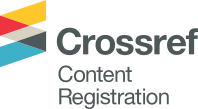Sorption Properties of Chitosan in the Refining of Rough Indium
DOI:
https://doi.org/10.18321/ectj727Abstract
The degree of purity of cathode deposits during the electrochemical refining of rough indium depends on the content of impurity metals in the electrolyte. In this work, an additional sorption purification of the refining electrolyte was carried out in order to reduce the content of such impurity metals as cadmium, lead, copper. Chitosan was used as a sorbent due to high sorption properties with respect to heavy metal ions. The determination of the concentration of the studied metals before and after the sorption was carried out by the method of differential pulse anodic stripping voltammetry (DPASV). The experimental results allowed to calculate the amount of metal sorbed by chitosan and the efficiency of its removal. The Langmuir and Freundlich adsorption models were applied to describe the equilibrium isotherms and isotherm constants were determined. The Langmuir model agrees very well with experimental data. An inductively coupled plasma optical emission spectroscopy (ICP-OES) method was used to determine the presence of impurity metals and the degree of purity of electrorefined indium. The use of chitosan as a sorbent in the purification of rough indium allows to reduce the concentration of impurity metals in cathode deposits and to increase the content of the base metal to 99.9994%.
References
(1). Y.D. Gamburg, G. Zangari, Theory and Practice of Metal Electrodeposition. Springer, New York, 2011, p. 375.
(2). Y.H. Chung, C.W. Lee, J. Electrochem. Sci. Technol. 3 (2012) 1–13. Crossref
(3). G.A. Kolobov, N.N. Rakova, K.A. Pechurica, A.V. Karpenko. Rafinirovanie indiya [Refining of indium], Theory and practice of metallurgy, 31 (2014) 62–67 (in Russian).
(4). L.A. Kazanbaev, P.A. Kozlov, V.L. Kubasov, V.F. Travkin. Indiy. Tehnologii polucheniya [Indium. Technology of its production]. Moscow, Publishing House “Ore and Metals”, 2004, p. 168 (in Russian).
(5). B. Gabai, N.A.A. dos Santos, D.C.S. Azevedo, S. Brandani, C.L. Cavalcante Jr, Braz. J. Chem. Eng. 14 (1997). Crossref
(6). K.G. Scriabin (Ed.). Hitin i hitozan: Poluchenie, svoystva i primenenie [Chitin and chitosan: Preparation, properties and application]. Moscow, Nauka, 2002, p. 368 (in Russian).
(7). S.E. Cahyaningrum, Narsito, S.J. Santoso, R. Agustini, The Third Nanoscience and Nanotechnology Symposium, Bandung, Indonesia, 2010, p. 203-207. ISSN 0094-243X.
(8). J.F van Staden, M.C Matoetoe, Anal. Chim. Acta 411 (2000) 201–207. Crossref
(9). GOST R 51301-99, Produktyi pischevyie i prodovolstvennoe syire. Inversionno-voltamperometricheskie metodyi opredeleniya soderzhaniya toksichnyih elementov (kadmiya, svintsa, medi i tsinka) [Food and food raw materials. Inversion-voltammetric methods for determining the content of toxic elements (cadmium, lead, copper and zinc)], 2010, p. 22 (in Russian).
(10). H. Xu, P. Yang, Q. Zheng, J. Liu, L. Jin, Chin. J. Chem. 28 (2010) 2287–2292. Crossref
(11). G. Henze, translated from German by A.V. Garmash, A.I. Kamenev, Polyarografiya i voltamperometriya. Teoreticheskie osnovyi i analiticheskaya praktika [Polarography and voltammetry. Theoretical bases and analytical practice]. Moscow, BINOM. Laboratoriya
znanii, 2012, p. 284 (in Russian).
(12). M.F. de Oliveira, A.A. Saczk, L.L. Okumura, A.P. Fernandes, M. de Moraes, N. R. Stradiotto, Anal. Bioanal. Chem. 380 (2004) 135–140. Crossref
(13). A.O. Dada, A.P. Olalekan, A.M. Olatunya, O. Dada, Journal of Applied Chemistry 3 (2012) 38–45. Crossref
(14). V.I. Zelentsov, T.Ya. Datsko, Elektronnaya Obrabotka Materialov, [Electronic material processing] 48 (2012) 65–73 (In Russian).
(15). T. Anitha, P. Senthil Kumar, and K. Sathish Kumar, Environmental Progress & Sustainable Energy 34 (2015) 15–22. Crossref
(16). R. Dongre, M. Thakur, D. Ghugal, J. Meshram, Bull. Mater. Sci. 35 (2012), 875–884. Crossref
(17). G.S. Rakhymbay, R.J. Jumanova, B.D. Burkitbaeva, A.M. Argimbaeva, A.P. Kurbatov, M.K. Nauryzbaev, International Journal of Biology and Chemistry 7 (2014) 27–32. ISSN: 2218-7979
(18). B.D. Burkitbaeva, A.M. Argimbaeva, G.S. Rakhymbay, K. Avchukir, K.S. Tassibekov, M.K. Nauryzbaev, Matec Web Conf. 96 (2017) 00005. Crossref
Downloads
Published
How to Cite
Issue
Section
License
You are free to: Share — copy and redistribute the material in any medium or format. Adapt — remix, transform, and build upon the material for any purpose, even commercially.
Eurasian Chemico-Technological Journal applies a Creative Commons Attribution 4.0 International License to articles and other works we publish.
Subject to the acceptance of the Article for publication in the Eurasian Chemico-Technological Journal, the Author(s) agrees to grant Eurasian Chemico-Technological Journal permission to publish the unpublished and original Article and all associated supplemental material under the Creative Commons Attribution 4.0 International license (CC BY 4.0).
Further distribution of this work must maintain attribution to the author(s) and the published article’s title, journal citation, and DOI.









